Laterite Temples in Odisha
Okay, architecture nerds and history buffs: 10 temple in odisha that'll blow your mind. Different styles, spanning multiple centuries. Including 1 UNESCO sites, each documented with proper architectural surveys, historical research, and conservation records. Not tourist brochure stuff—actual scholarly work you can cite. We've got 3D scans showing construction details nobody could see from ground level, floor plans revealing spatial logic, archival research uncovering commissioning contexts. Multiple patronage networks contributed, and the more you dig into these sites, the more complex the story gets. Perfect for academic research, architectural study, or just deep-diving because you're fascinated by how people built things without CAD software.
10 sites with scholarly documentation
Measured architectural surveys
Comprehensive photo documentation
Downloadable data for academic use
Total Sites:10
UNESCO Sites:1
ASI Protected:6
Top Style:Kalinga Architecture + Hindu Temple + Elevated platform, curvilinear tower (1)
Top Period:Eastern Ganga Period (10)
Avg. Documentation:82%
Historical Context
The historical context for these 10 temple is layered. On the surface: various periods when powerful patrons funded construction. Dig deeper and you find competing narratives: official inscriptions saying one thing, architectural evidence suggesting another, oral traditions preserving details written records missed. Multiple dynasties used architecture politically—building bigger, more ornate, more technically ambitious than predecessors. But construction involved massive labor mobilization, resource networks, craft guild politics. Site-specific research reveals fascinating details: where stone was quarried, how workers were organized, what design changes happened mid-construction. Epigraphic studies of inscriptions at these sites have upended previous dating assumptions. Architectural analysis suggests sequential building phases not reflected in traditional histories. Archaeological excavations keep turning up evidence of pre-existing structures, showing these weren't built on empty land but often incorporated or replaced earlier sites. The religious and political contexts matter, but so does understanding these as economic enterprises employing hundreds of skilled and unskilled workers for years or decades.
Architectural Significance
Architecturally, these 10 temple are fascinating case studies. Diverse stylistic approaches reveal but understanding how they achieved this with medieval technology is the interesting part. Structural analysis shows sophisticated load calculations: they knew about stress distribution, material strengths, foundation requirements. Working with laterite shaped design possibilities—corbelling techniques that seem impossible, arch and dome construction predating European examples, seismic resistance built into foundations. Detailed documentation reveals construction sequences: they'd build support structures, carve decorative elements before installation, use temporary wooden frameworks for arches. Surface analysis shows tool marks indicating carving techniques. Paint trace analysis (UV photography reveals remnants) shows these weren't bare stone—they were polychrome, with colors encoding meaning. Iconographic programs follow sophisticated theological or cosmological schemas. Geometric analysis of floor plans reveals proportional systems based on complex numerical ratios. Photogrammetric surveys have identified construction errors, subsequent repairs, later additions. Comparing structural systems across sites shows knowledge transmission between workshops, regional variations on shared techniques, experimental solutions when standard approaches wouldn't work. This is why proper documentation matters—every detail teaches us something about medieval engineering and artistry.
Conservation & Preservation
From a conservation science perspective, these 10 sites present challenging case studies. 6 under ASI protection benefit from systematic documentation, which is crucial for evidence-based interventions. Material degradation analysis shows weathering patterns, biological colonization, structural fatigue. Non-destructive testing reveals hidden damage: ground-penetrating radar for foundations, ultrasonic for internal voids, thermal imaging for moisture. Conservation ethics debates play out at these sites: reconstruction versus stabilization, authenticity versus visitor safety, documentation versus intervention. Case studies from these 10 sites inform global best practices. For instance, lime mortar analysis has revealed traditional binding compositions that outperform modern cement. Structural monitoring using sensors tracks seasonal movement, helping predict failure. Comparative studies of conserved versus unconserved areas quantify intervention effectiveness. Digital preservation (3D scans, photogrammetry, BIM modeling) creates archival records enabling virtual restoration of damaged elements. Climate change impact studies show increased weathering rates, necessitating adaptive conservation strategies. Community archaeology programs document oral histories about sites before they're lost. This isn't just about keeping old buildings standing—it's about understanding historical technology, traditional knowledge systems, and developing conservation methodologies applicable globally.
Visitor Information
For researchers and serious enthusiasts visiting these 10 temple: Access logistics vary. odisha has reasonable infrastructure—coordinate with local ASI offices for special access permissions if needed (documentation photography, detailed measurements). Best research visits: October-March for weather, but off-season means fewer crowds if you need extended observation time. Entry bureaucracy: Indian nationals usually smooth, foreign researchers may need academic credentials. Photography: consumer-grade fine, professional equipment may require permissions. Detailed study: negotiate with site authorities—most are accommodating for serious research. Local experts: connect with regional universities and ASI officers who've worked on these sites. They know unpublished details, ongoing research, and can facilitate access. Documentation standards: Use calibrated scales for measurements, document lighting conditions for photography, GPS for precise locations, environmental conditions for conservation assessments. Comparative research: our database enables cross-site analysis—search by structural type, decorative program, material, period. Research ethics: respect that many sites remain active worship spaces. Community protocols matter. Citation: our documentation includes survey dates, methodologies, team composition—proper attribution for academic use. Downloadable resources include measured drawings, 3D models, bibliographies, conservation reports. Perfect for dissertation research, architectural analysis, comparative studies, or just satisfying deep curiosity about how people built amazing things centuries ago.
Key Facts & Statistics
•
Total documented heritage sites: 10
•
UNESCO World Heritage Sites: 1
Source: UNESCO World Heritage Centre
•
ASI centrally protected monuments: 6
Source: Archaeological Survey of India
•
Temple: 10 sites
•
Kalinga Architecture + Hindu Temple + Elevated platform, curvilinear tower architectural style: 1 sites
•
Kalinga Architecture + Temple + Elevated platform, curvilinear tower. architectural style: 1 sites
•
Kalinga Architecture + Temple + Wheel-shaped, intricate carvings architectural style: 1 sites
•
Kalinga Architecture + Temple + Elevated sanctuary, curvilinear tower architectural style: 1 sites
•
Kalinga architecture + Hindu temple + Circular hypaethral plan architectural style: 1 sites
•
Eastern Ganga Period period construction: 10 sites
•
Average documentation completion score: 82%
•
odisha ranks among India's top heritage destinations with 10 documented sites
•
Featured flagship heritage sites: 10
•
Comprehensive digital archiving preserves heritage for future generations
•
Comprehensive digital archiving preserves heritage for future generations
•
Comprehensive digital archiving preserves heritage for future generations
•
Comprehensive digital archiving preserves heritage for future generations
•
Comprehensive digital archiving preserves heritage for future generations
•
Comprehensive digital archiving preserves heritage for future generations
•
Comprehensive digital archiving preserves heritage for future generations
Frequently Asked Questions
How many temple are documented in odisha?
This collection includes 10 documented temple in odisha. Of these, 1 are UNESCO World Heritage Sites. 6 sites are centrally protected by ASI. Each site has comprehensive documentation including photos, floor plans, and historical research.
What is the best time to visit temple in odisha?
October to March is ideal for visiting temple in odisha, with pleasant temperatures (15-25°C) and minimal rainfall. Avoid May-June (peak summer) and July-September (monsoon season). Major festivals also offer unique cultural experiences. Check individual site pages for specific visiting hours and seasonal closures.
What are the entry fees for temple?
ASI-protected monuments charge ₹25-₹40 for Indian nationals and ₹250-₹600 for foreign tourists. State-protected sites often have lower or no entry fees. Many temples and religious sites are free. Children under 15 typically enter free. Still photography is usually included; video may require additional permits.
Are photography and videography allowed at heritage sites?
Still photography for personal use is generally permitted at most heritage sites. Tripods, flash photography, and commercial filming usually require special permissions. Some sites restrict photography of murals, sculptures, or sanctums. Drones are prohibited without explicit authorization. Always respect signage and guidelines at individual monuments.
How do I reach temple in odisha?
odisha is well-connected by air, rail, and road. Major cities have airports with domestic and international flights. Indian Railways operates extensive networks. State and private buses connect smaller towns. Most heritage sites are accessible by taxi, auto-rickshaw, or rental vehicles. Plan 2-3 hours per major monument.
Are these heritage sites wheelchair accessible?
Accessibility varies significantly. Major UNESCO sites and recently renovated monuments often have ramps and accessible facilities. However, many historical structures have steps, uneven surfaces, and narrow passages. Contact site authorities in advance for specific accessibility information. Our site pages indicate known accessibility features where available.
Are guided tours available at temple?
Licensed guides are available at most major heritage sites, typically charging ₹200-₹500 for 1-2 hour tours. ASI-approved guides provide historical and architectural insights. Audio guides are available at select UNESCO sites. Our platform offers virtual tours and detailed documentation for major monuments.
What is the conservation status of these temple?
6 sites are legally protected by ASI. Active conservation includes structural stabilization, surface cleaning, vegetation control, and drainage management. Digital documentation helps monitor deterioration. Ongoing surveys track condition changes for evidence-based interventions.
What documentation is available for these heritage sites?
Each site includes high-resolution photography, architectural measurements, historical research, and expert annotations. Documentation averages 82% completion.
How much time should I allocate for visiting?
Plan 2-3 hours for major monuments to appreciate architectural details and explore grounds. Smaller sites may require 30-60 minutes. Multi-site itineraries should allocate travel time. Early morning or late afternoon visits offer better lighting for photography and fewer crowds. Check individual site pages for recommended visiting durations.
What is the cultural significance of these temple?
These monuments represent India's diverse cultural heritage, reflecting centuries of architectural innovation, religious traditions, and artistic excellence. They serve as living links to historical societies, preserving knowledge about construction techniques, social structures, and cultural values. Many sites remain active centers of worship and community gathering.
What other attractions are near these heritage sites?
odisha offers diverse tourism experiences beyond heritage monuments. Explore local museums, craft villages, nature reserves, and cultural festivals. Many heritage sites are clustered in historic towns with traditional markets and cuisine. Our site pages include nearby attraction recommendations and multi-day itinerary suggestions.
How can I practice responsible heritage tourism?
Respect site rules including photography restrictions and designated pathways. Don't touch sculptures, murals, or walls. Dispose waste properly. Hire local guides to support communities. Avoid visiting during restoration work. Learn about cultural contexts before visiting. Report damage to authorities. Your responsible behavior helps preserve heritage for future generations.
References & Sources
[4]
📍
StateOdisha
What is Temple in odisha?
Okay, architecture nerds and history buffs: 10 temple in odisha that'll blow your mind. Different styles, spanning multiple centuries. Including 1 UNESCO sites, each documented with proper architectural surveys, historical research, and conservation records. Not tourist brochure stuff—actual scholarly work you can cite. We've got 3D scans showing construction details nobody could see from ground level, floor plans revealing spatial logic, archival research uncovering commissioning contexts. Multiple patronage networks contributed, and the more you dig into these sites, the more complex the story gets. Perfect for academic research, architectural study, or just deep-diving because you're fascinated by how people built things without CAD software.
Total Count:
0 sitesRegion:
odishaType:
TempleStatus:
Heritage ProtectedKey Characteristics
- 1Sacred sanctum housing main deity
- 2Assembly halls for rituals and ceremonies
- 3Intricate stone carvings depicting mythology
- 4Orientation based on Vastu principles
- 5Integration with natural landscape
- 6Community gathering spaces
Distribution by State
| 📍Odisha | 10 sites |
10
Total Sites
1
UNESCO Sites
6
ASI Protected
10
Featured
10 Sites Found

Featured
85% Documented
Tankapani Road, Khordha, Bhubaneswar (751002), Odisha, India, Odisha
The rising sun cast long shadows across the sculpted walls of the Brahmeswara Temple, painting the warm, sandstone a deeper shade of gold. Standing before this magnificent structure in Bhubaneswar, I felt a palpable connection to the architectural prowess of the Somavamsi dynasty. As someone who has explored every UNESCO World Heritage site in India, I can confidently say that the Brahmeswara Temple holds a unique position, showcasing a distinct evolutionary stage in Kalinga architecture. The temple, dedicated to Lord Shiva, is relatively compact compared to some of the later behemoths of Odisha. Yet, this very compactness allows for an intimate experience. Every inch of the temple’s surface is a riot of intricate carvings. Unlike the later temples of Konark and Puri, where the sculptures often stand out in high relief, the carvings here are more closely integrated with the temple walls, creating a seamless tapestry of narrative and decorative elements. My gaze was immediately drawn upwards to the towering *shikhara*, the curvilinear tower that dominates the skyline. The Brahmeswara Temple marks a crucial transition in the development of this architectural feature, exhibiting a more refined and elongated form compared to earlier examples. The *shikhara* is adorned with miniature replicas of itself, creating a mesmerizing fractal effect. I spent a considerable amount of time simply tracing the lines of these miniature *shikharas* with my eyes, marveling at the precision and artistry involved. Circling the temple, I observed the *jagamohana*, the pillared hall in front of the sanctum. This structure, too, is richly ornamented. The pillars, while not freestanding, are carved with intricate designs depicting deities, mythical creatures, and scenes from everyday life. I noticed several panels depicting musicians playing various instruments, offering a glimpse into the cultural landscape of 11th-century Odisha. The *jagamohana* walls are equally captivating, showcasing elaborate depictions of *dikpalas*, the guardians of the eight directions. One of the most striking features of the Brahmeswara Temple is the presence of erotic sculptures. While such depictions are common in later temples like Konark, their appearance here signifies an early acceptance of this motif within religious architecture. These sculptures, often tucked away in less prominent corners, are not gratuitous but rather represent the celebration of life and creation, a theme deeply embedded in Hindu philosophy. Stepping inside the dimly lit sanctum, I felt a sense of reverence wash over me. The *lingam*, the symbolic representation of Lord Shiva, stands at the center, bathed in the soft glow of oil lamps. The air was thick with the scent of incense and the murmur of prayers. While photography is restricted within the sanctum, the mental image of the serene deity amidst the ancient stones remains etched in my memory. Beyond the main temple, the complex houses several smaller shrines dedicated to various deities. These subsidiary structures, though less elaborate than the main temple, contribute to the overall sense of sacredness and architectural harmony. I noticed a small group of devotees performing rituals near one of these shrines, their chants adding another layer to the temple’s soundscape. As I walked away from the Brahmeswara Temple, the late afternoon sun casting long shadows behind me, I couldn't help but reflect on the enduring legacy of this architectural marvel. It stands as a testament to the skill and vision of the artisans who crafted it, and a powerful reminder of the rich cultural heritage of India. For anyone seeking to understand the evolution of temple architecture in Odisha, the Brahmeswara Temple is an essential pilgrimage. It is a place where history, art, and spirituality converge, offering a truly enriching experience.
Temple
Eastern Ganga Period
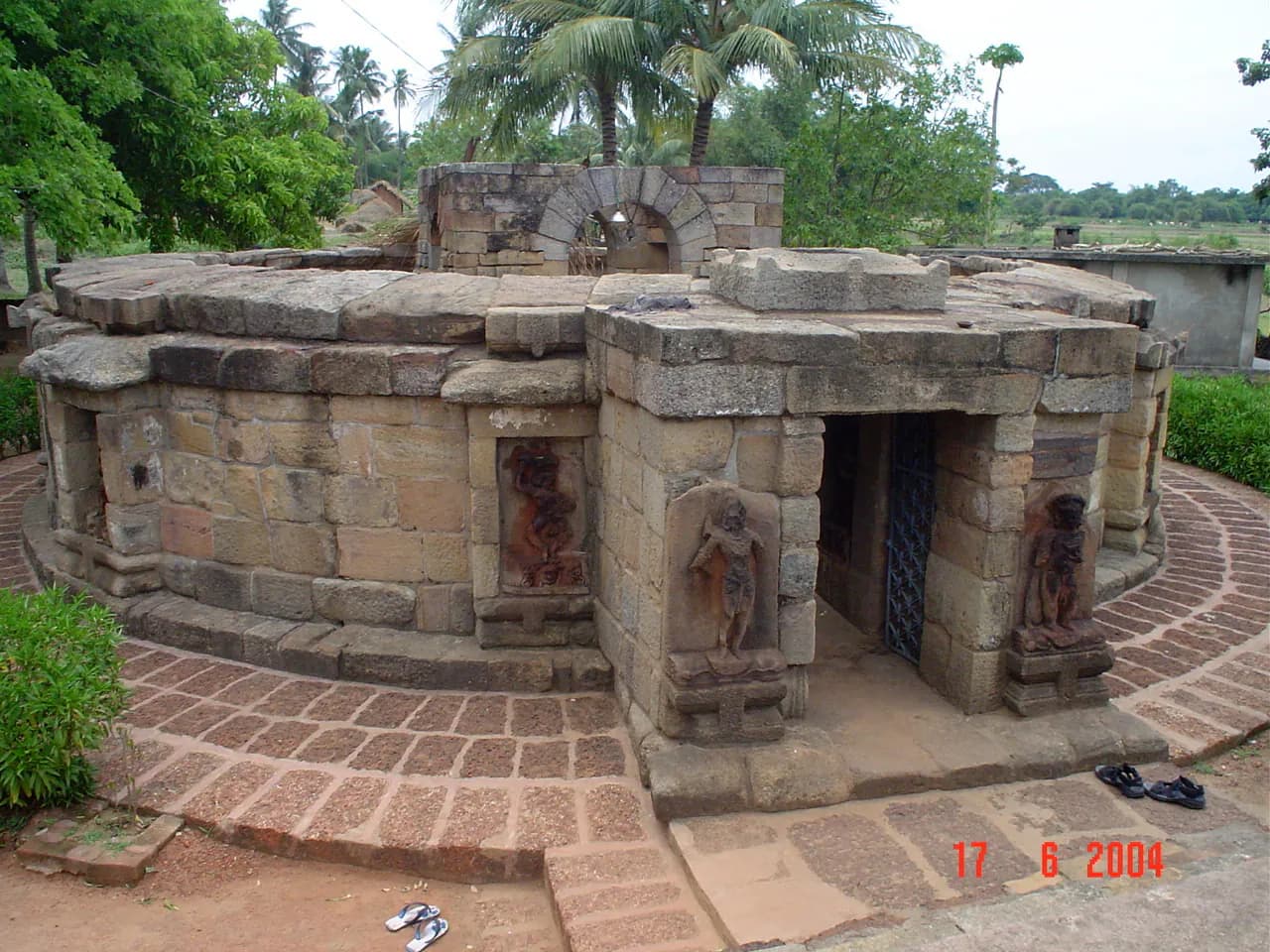
Featured
80% Documented
Hirapur, Khurda, Bhubaneswar (752055), Odisha, India, Odisha
The late afternoon sun cast long shadows across the circular platform, highlighting the weathered stone of the Chausath Yogini Temple at Hirapur. Ascending the worn steps, I felt a palpable shift, a sense of stepping back into time. This wasn't just another temple; it was a fortress of feminine power, a hypaethral shrine dedicated to sixty-four yoginis, the attendants of Goddess Durga. Unlike the towering shikharas that dominate Gujarat's temple landscape, this structure was strikingly different – a circular enclosure, open to the sky, exuding an aura of ancient mystique. The temple, dating back to the 9th century, is a testament to the architectural prowess of the Somavamsi dynasty. The circular wall, built of laterite blocks, encloses a paved courtyard approximately 230 feet in diameter. This open-air design, unique in Odisha's temple architecture, allows the celestial bodies to be a direct part of the worship, a concept that resonated deeply with me. Having documented the intricate, enclosed spaces of Gujarat's sun temples, this open-air sanctuary felt both liberating and strangely intimate. Sixty niches, each originally housing a yogini sculpture, punctuate the inner face of the circular wall. Many of these sculptures are now missing or damaged, victims of time and perhaps iconoclasm. Yet, the remaining yoginis, carved from chlorite, display a remarkable dynamism. Their postures, some serene, some fierce, capture a spectrum of emotions and powers. I was particularly struck by the intricate detailing of their ornaments and the individualized expressions on their faces. They weren't mere representations of divine attendants; they were individuals, each with a story to tell. This contrasted sharply with the more standardized depictions of deities I'd encountered in Gujarat's temples. At the center of the courtyard stands a small, rectangular shrine dedicated to Lord Shiva. This placement, within the circle of yoginis, speaks volumes about the tantric influences prevalent during the temple's construction. The yoginis, representing various forms of Shakti, encircle the male principle, Shiva, symbolizing a cosmic balance of power. This visual representation of tantric philosophy was a powerful experience, a far cry from the Vaishnava and Shaiva traditions that dominate Gujarat's religious landscape. Walking along the circular ambulatory, I noticed the subtle variations in the height of the wall. The uneven terrain has been cleverly incorporated into the design, with the wall rising and falling to maintain the circular plan. This sensitivity to the natural landscape, a hallmark of many ancient Indian structures, was truly impressive. It reminded me of the stepwells of Gujarat, where architecture seamlessly blends with the environment. The outer wall of the temple, though less ornate than the inner, features several smaller niches housing additional deities. These figures, though weathered, add another layer of complexity to the temple's iconography. I spent a considerable amount of time studying these smaller sculptures, trying to decipher their identities and significance. The experience felt like peeling back layers of history, uncovering the rich tapestry of beliefs and practices that shaped this sacred space. As the sun began to set, casting a warm golden glow over the temple, I felt a profound sense of peace. The Chausath Yogini Temple at Hirapur is more than just an architectural marvel; it's a living testament to a complex spiritual tradition. It's a place where the boundaries between the earthly and the divine blur, where the energies of the yoginis still seem to linger in the air. Leaving the temple, I carried with me not just photographs and notes, but a deep appreciation for the diversity and richness of India's cultural heritage. It was a journey of discovery, a reminder that there are always new stories to be found, new perspectives to be gained, just beyond the familiar landscapes of home.
Temple
Eastern Ganga Period
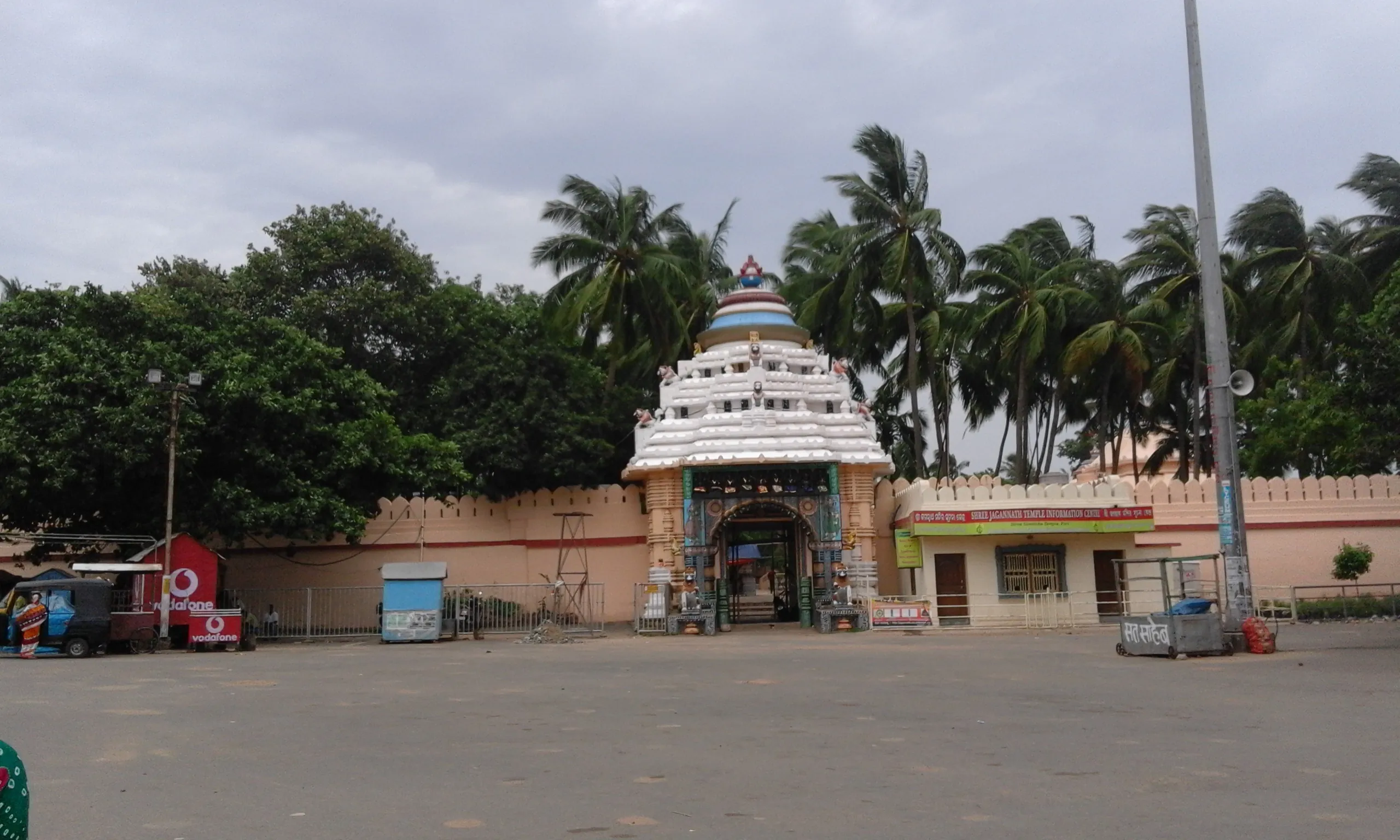
Featured
80% Documented
Grand Road, Puri, Puri (752002), Odisha, India, Odisha
The midday sun beat down on the sand-coloured walls of the Gundicha Temple, lending a warm glow to the laterite stone. Standing within its precincts, I felt a palpable shift in atmosphere from the bustling Jagannath Temple a few kilometres away. While Jagannath’s abode vibrates with constant activity, Gundicha, known as the Garden House of Jagannath, exuded a serene, almost pastoral tranquility. This, I learned, is where the deities – Jagannath, Balabhadra, and Subhadra – spend their annual nine-day vacation during the Rath Yatra. My Chennai-trained eyes, accustomed to the granite grandeur of Dravidian architecture, were immediately struck by the Kalinga style’s unique characteristics. The temple, though smaller than Jagannath’s, shares a similar plan, with a deul (sanctum tower), jagamohan (assembly hall), and nata-mandir (festival hall). However, the deul’s curvilinear tower, a hallmark of Kalinga architecture, differed significantly from the pyramidal vimanas I was familiar with. The tower’s gentle upward sweep, culminating in a rounded amalaka and kalasa finial, created a sense of flowing movement, almost as if reaching towards the heavens. The absence of elaborate sculptural ornamentation, so characteristic of South Indian temples, further emphasized the temple's elegant simplicity. The jagamohan, with its pyramidal roof, provided a cool respite from the Odisha sun. Its plain walls, devoid of the intricate carvings seen in Dravidian mandapas, allowed the eye to focus on the overall proportions and the play of light and shadow. I noticed the use of iron beams in the construction of the roof, a feature rarely seen in South Indian temples of a similar period. This hinted at the region's historical expertise in metallurgy and its incorporation into temple architecture. The nata-mandir, a later addition to the complex, stood apart with its rectangular plan and sloping roof. Its open sides allowed for a free flow of air and provided a perfect vantage point for witnessing the rituals and festivities associated with the Rath Yatra. I could almost picture the deities being seated here, enjoying the devotional performances and the adulation of their devotees. As I walked around the temple, I observed the unique decorative elements that distinguished the Kalinga style. The pidha mundis, miniature replicas of the main tower, adorning the roofline, added a rhythmic visual interest. The khura, a decorative horse-shoe shaped element above the doorway, and the alasakanyas, celestial nymphs gracing the walls, provided subtle yet significant embellishments. While less profuse than the sculptural programs of South Indian temples, these elements possessed a distinct charm and conveyed a sense of refined elegance. The temple's connection to the Rath Yatra is palpable. The wide open space in front of the temple, known as the Bada Danda, serves as the main thoroughfare for the colossal chariots. Standing there, I imagined the electrifying atmosphere during the festival, the air thick with incense and the chants of devotees pulling the chariots. The Gundicha Temple, during those nine days, transforms from a tranquil retreat into the epicentre of a vibrant spiritual celebration. My visit to the Gundicha Temple was more than just an architectural exploration; it was an immersion into a different cultural and spiritual landscape. While the architectural vocabulary differed significantly from what I was accustomed to, the underlying devotion and the sanctity of the space resonated deeply. The temple’s simplicity, its connection to nature, and its role in the grand spectacle of the Rath Yatra offered a unique perspective on temple architecture and its role in shaping religious and cultural practices. It reinforced the idea that architectural styles, while diverse, ultimately serve as conduits for human spirituality and cultural expression.
Temple
Eastern Ganga Period
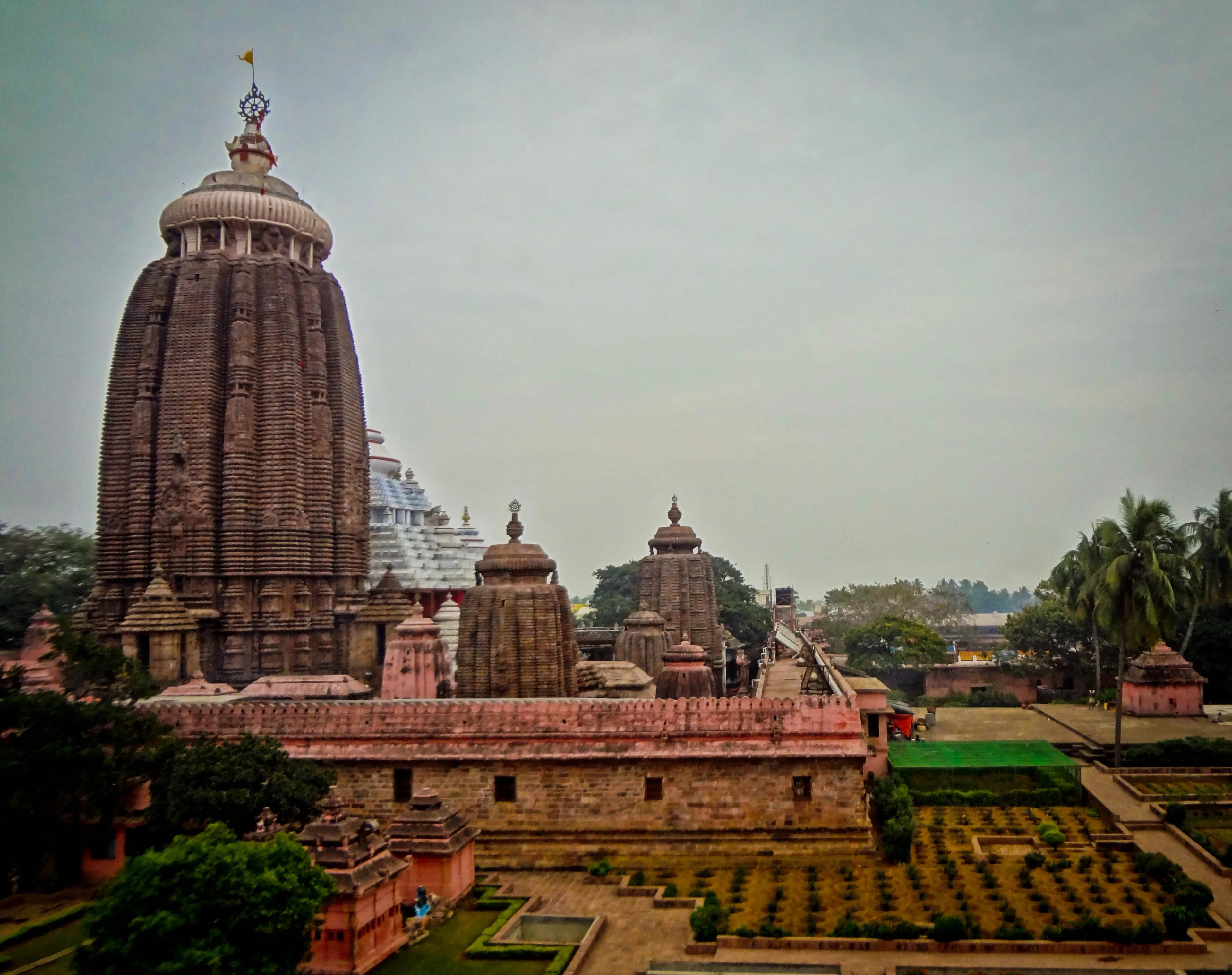
Featured
80% Documented
Grand Road, Puri, Puri (752001), Odisha, India, Odisha
The air, thick with the scent of incense and the rhythmic chanting of Sanskrit hymns, vibrated with a palpable energy. Standing before the Jagannath Temple in Puri, I felt an immediate sense of being transported, not just to another era, but to another realm entirely. The colossal curvilinear shikhara of the main temple, a beacon against the Odisha sky, dominated the landscape, its intricate carvings a testament to the skill of the ancient Kalinga artisans. My visit to Puri had long been anticipated. As someone deeply immersed in the study of ancient Indian architecture, the Jagannath Temple, with its unique Kalinga style, held a special allure. The temple complex, enclosed within massive laterite walls, felt like a city within a city, a microcosm of the cosmos itself. The sheer scale of the structure is awe-inspiring. The main temple, dedicated to Lord Jagannath, along with the adjacent temples of Balabhadra and Subhadra, rise on a raised platform, creating a sense of elevation and grandeur. The Nila Chakra, the iconic blue disc atop the main shikhara, gleamed under the afternoon sun. Its eight spokes, radiating outwards, seemed to symbolize the temple’s reach, its influence extending far beyond the physical confines of its walls. I spent a considerable amount of time examining the intricate carvings that adorned every inch of the temple’s exterior. The narrative panels depicting scenes from the epics, the celestial beings frozen in graceful poses, and the intricate floral motifs, all spoke volumes about the rich artistic traditions of the region. One of the most striking features of the Jagannath Temple is its unique construction technique. Unlike many other temples in India built with dressed stone, this temple is primarily constructed using laterite blocks. The softness of this material allowed for intricate carvings, but also meant that the temple has undergone several renovations and repairs throughout its history, adding layers of architectural history upon each other. This palimpsest of styles, from the original Kalinga architecture to later influences, makes it a fascinating case study for anyone interested in the evolution of temple architecture in India. Inside the temple, the atmosphere was charged with devotion. The dimly lit sanctum sanctorum, where the deities reside, was shrouded in an aura of mystery. While non-Hindus are not permitted inside, the energy emanating from within was palpable even from the outer courtyard. The sounds of chanting, the clanging of bells, and the aroma of offerings created a sensory experience that was both overwhelming and deeply moving. I was particularly intrigued by the temple’s kitchen, considered the largest in the world. The sheer scale of the operations, with hundreds of cooks preparing food for thousands of devotees every day, was astonishing. The traditional methods of cooking, using earthen pots and firewood, have been preserved for centuries, adding another layer to the temple’s cultural significance. As I walked around the complex, observing the pilgrims from all walks of life, I realized that the Jagannath Temple is more than just a monument of architectural brilliance. It is a living, breathing entity, a testament to the enduring power of faith and tradition. It is a place where the sacred and the secular intersect, where history and mythology intertwine, and where the human spirit finds solace and connection. Leaving the temple, I carried with me not just photographs and notes, but a profound sense of awe and a deeper understanding of the rich tapestry of Indian culture.
Temple
Eastern Ganga Period

UNESCO
Featured
85% Documented
Konark, Puri, Konark (752111), Odisha, India, Odisha
The colossal chariot of the Sun God, frozen in stone, dominates the landscape at Konark. Emerging from the morning mist, the temple, even in its fragmented state, exudes an aura of power and intricate artistry that is simply breathtaking. As a Chennai native steeped in the Dravidian architectural tradition, my visit to this Kalinga style marvel was an exercise in appreciating the diverse tapestry of Indian temple architecture. The sheer scale of the Konark Sun Temple is the first thing that strikes you. The temple, conceived as a gigantic chariot with twelve pairs of exquisitely carved wheels drawn by seven horses, speaks volumes about the ambition and skill of the 13th-century architects. While the main temple (vimana) has largely collapsed, the Jagamohan (assembly hall) remains remarkably intact, offering a glimpse into the temple's former glory. The pyramidal roof of the Jagamohan, rising in tiers adorned with intricate sculptures, is a testament to the Kalinga style's distinctive curvilinear silhouette, a stark contrast to the towering gopurams I'm accustomed to seeing in Dravidian temples. The wheels of the chariot are not mere decorative elements; they are sundials, accurately measuring time. The spokes are carved with intricate floral patterns and miniature figures, showcasing the artisans' mastery over detail. I spent a considerable amount of time examining these wheels, fascinated by their precision and artistic beauty. They serve as a reminder of the deep connection between architecture, astronomy, and spirituality in ancient India. The temple's outer walls are covered with a profusion of sculptures, depicting a vibrant panorama of life in 13th-century Odisha. From deities and celestial beings to courtly scenes, erotic sculptures, and depictions of everyday life, the carvings offer a fascinating window into the social and cultural fabric of the time. The erotic sculptures, while controversial to some, are an integral part of the temple's iconography, representing the cycle of creation and the celebration of life. Their presence, alongside depictions of spiritual and secular themes, highlights the holistic worldview that permeated ancient Indian art. One striking difference I observed compared to South Indian temples is the prominence of iron beams used in the Konark temple's construction. While the exact purpose of these iron beams is still debated, their presence suggests a sophisticated understanding of metallurgy and engineering. This contrasts with the predominantly stone-based construction techniques employed in Dravidian temples. The Natmandir (dance hall), though now in ruins, still echoes with the ghosts of dancers and musicians who once graced its platform. I could almost visualize the vibrant performances that would have taken place here, accompanied by the rhythmic beating of drums and the melodious strains of stringed instruments. The temple's architecture, with its open spaces and strategically placed platforms, seems designed to facilitate grand spectacles and processions, reinforcing the Sun God's role as a source of energy and life. Walking through the ruins of the Konark Sun Temple, I felt a profound sense of awe and melancholy. Awe at the sheer scale and artistic brilliance of the structure, and melancholy at the ravages of time and the forces of nature that have taken their toll. Yet, even in its fragmented state, the temple stands as a powerful testament to the ingenuity and artistic vision of its creators. It serves as a bridge across centuries, connecting us to a rich cultural heritage and reminding us of the enduring power of human creativity. My visit to Konark was not just a sightseeing trip; it was a pilgrimage, a journey into the heart of India's architectural and spiritual heritage. It reinforced my belief that the study of ancient architecture is not just an academic pursuit; it is a way to connect with the past, understand the present, and inspire the future.
Temple
Eastern Ganga Period
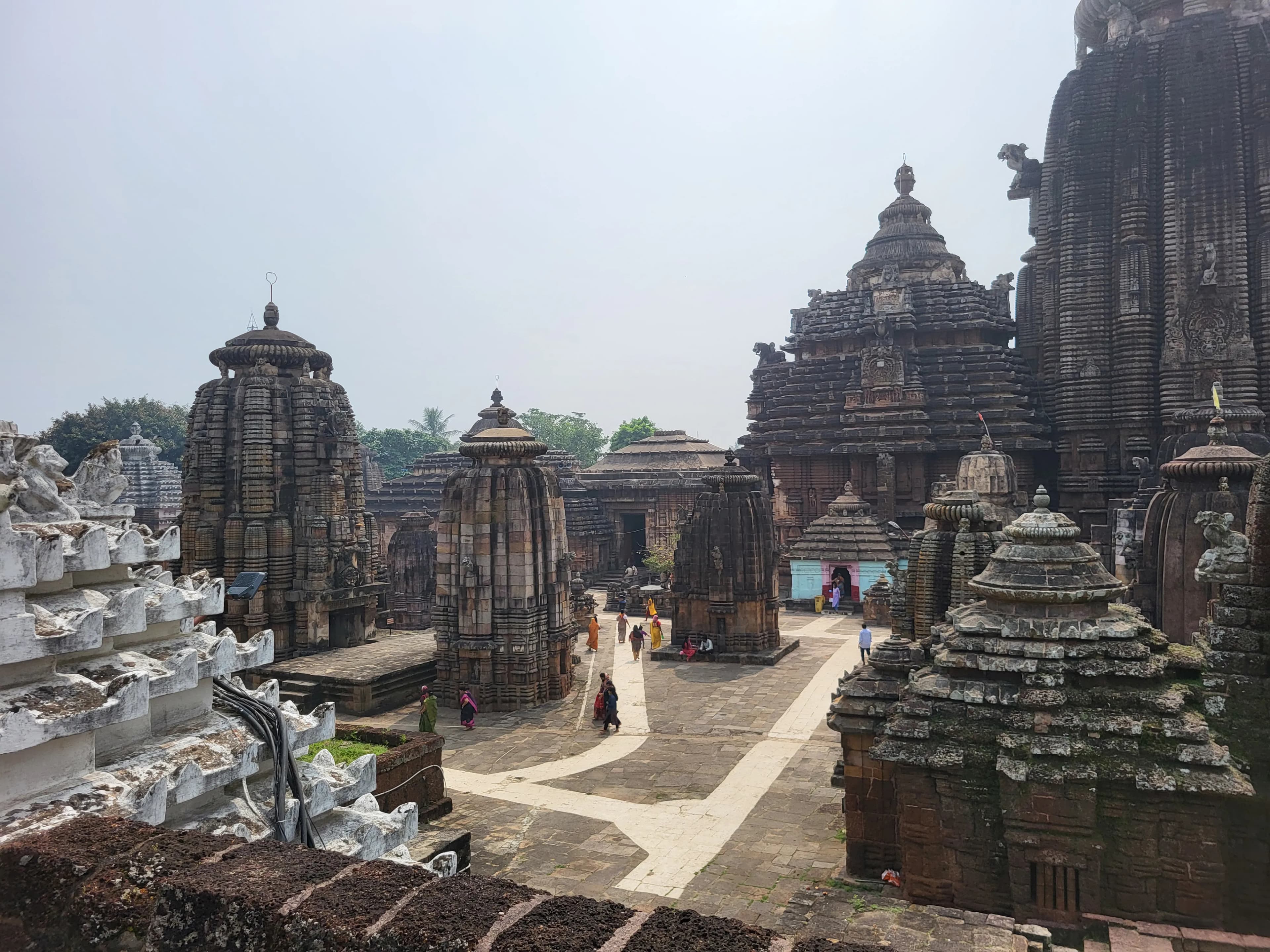
Featured
80% Documented
Lingaraj Temple Road, Bhubaneswar, Khordha (751002), Odisha, India, Odisha
The sun beat down on my neck, the Odisha heat a stark contrast to the Delhi winters I was accustomed to. But the discomfort melted away as I stood before the Lingaraj Temple in Bhubaneswar, a monument that whispered tales of a thousand years. Having explored countless temples across North India, I thought I had a grasp on the nuances of Kalinga architecture, but Lingaraj proved to be in a league of its own. The sheer scale of the complex, enclosed within a high compound wall, was the first thing that struck me. The main temple, dedicated to Harihara, a combined form of Shiva and Vishnu, soared upwards, its deul (tower) a masterpiece of intricate carvings. Unlike the sandstone and marble I was familiar with in the north, this temple was constructed of laterite, a locally available reddish-brown stone, which lent it a unique earthy hue. The deul, reaching a height of 55 meters, was covered in a dense tapestry of sculptures – deities, mythical creatures, and intricate floral patterns, each vying for attention. I spent hours circumambulating the temple, my gaze constantly drawn upwards. The vertical lines of the deul, punctuated by horizontal bands of carvings, created a powerful sense of upward movement, as if the entire structure was striving to reach the heavens. The jagamohan (assembly hall) and natamandir (dance hall), though smaller than the main deul, were equally impressive, their surfaces adorned with elaborate friezes depicting scenes from Hindu mythology. One of the most striking features of the temple was the sheer number of subsidiary shrines scattered within the complex. Each shrine, though smaller in scale, echoed the architectural style of the main temple, creating a sense of harmonious unity. I noticed that many of these shrines were dedicated to various forms of Shakti, the divine feminine, highlighting the importance of goddess worship in this region. As I moved closer to the main entrance, the air grew thick with the scent of incense and the murmur of chanting. Though non-Hindus are not allowed inside the sanctum sanctorum, I could feel the palpable sense of devotion emanating from within. I observed the devotees, their faces etched with reverence, offering flowers and coconuts to the deity. It was a powerful reminder of the living faith that animates these ancient stones. The intricate carvings on the temple walls deserved closer inspection. I noticed a recurring motif of the naga, the serpent deity, often depicted with multiple heads and coiled around various deities. The presence of the naga, a symbol of fertility and protection, underscored the temple's connection to the natural world. I also observed depictions of erotic sculptures, a common feature of Kalinga temples, which are believed to represent the cycle of creation and regeneration. The experience of visiting Lingaraj was not just about admiring the architecture; it was about immersing myself in the cultural tapestry of Odisha. The temple, with its rich history and vibrant present, served as a window into the religious and artistic traditions of this fascinating region. It was a humbling reminder of the enduring power of faith and the remarkable artistry of our ancestors. As I left the temple complex, the setting sun casting long shadows across the laterite walls, I felt a deep sense of gratitude for having witnessed this architectural marvel. Lingaraj was not just a temple; it was a testament to the enduring spirit of India.
Temple
Eastern Ganga Period
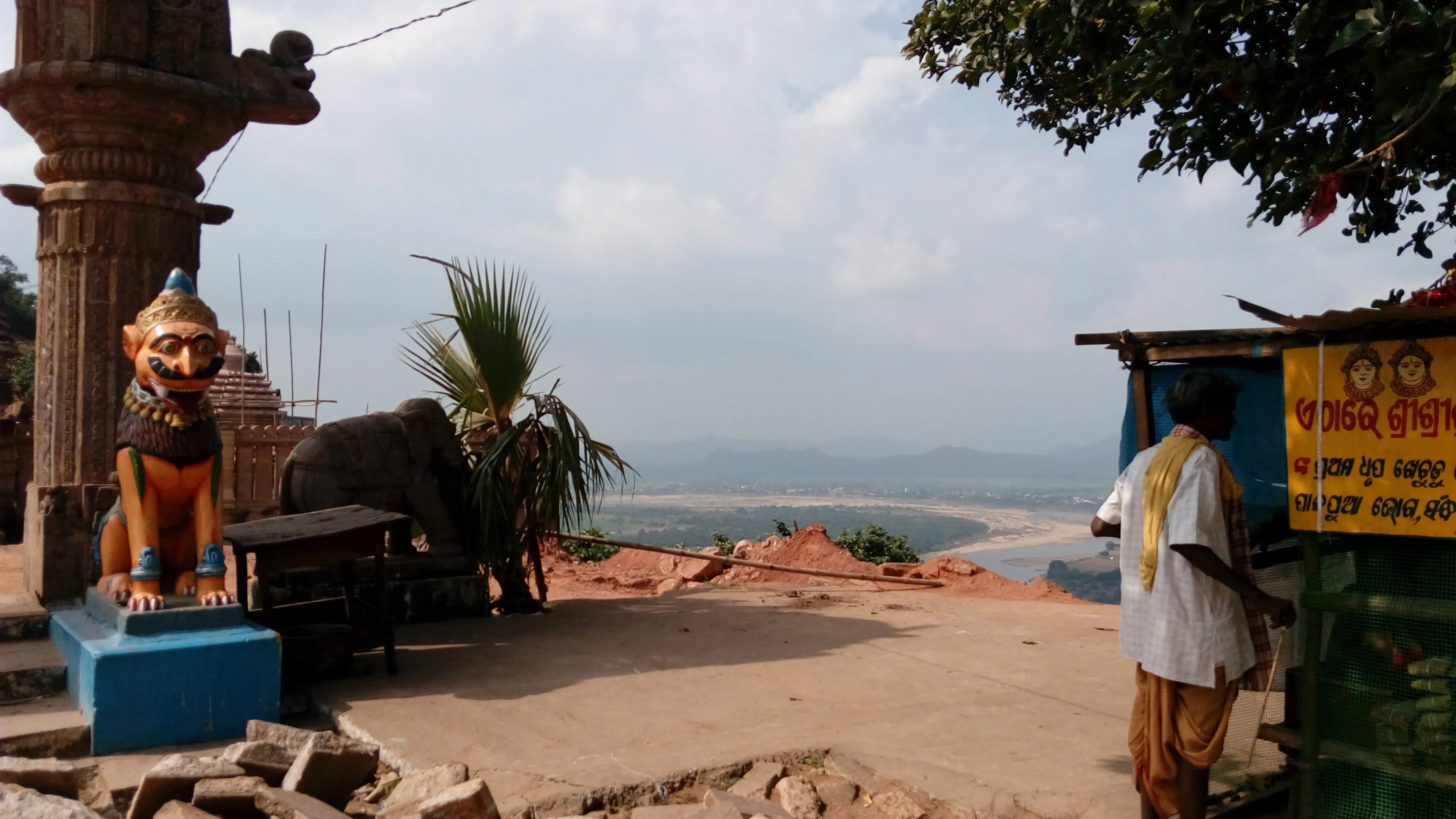
Featured
80% Documented
Purshottampur, Ganjam, Brahmapur (761003), Odisha, India, Odisha
The wind whipped my dupatta around me as I climbed the final steps to the Maa Tara Tarini temple, perched high on a hill overlooking the Rushikulya River. Having explored countless forts and palaces in Rajasthan, I’m always eager to experience new forms of heritage, and this Shakti Peetha in Odisha held a particular allure. The climb itself, though steep, was punctuated by the vibrant energy of devotees, their chants and the clang of bells creating a palpable buzz in the air. The temple complex is relatively small, a stark contrast to the sprawling citadels I’m accustomed to. Two brightly painted terracotta idols of the twin goddesses, Tara and Tarini, reside within the sanctum sanctorum. Unlike the elaborate marble carvings and sandstone latticework of Rajasthani architecture, the temple here embraces a simpler aesthetic. The main structure, while recently renovated, retains its traditional essence. The use of laterite stone and the distinctive sloping roof, reminiscent of the region's vernacular architecture, grounded the sacred space in its local context. What struck me most was the panoramic view from the hilltop. The Rushikulya River snaked its way through the verdant landscape below, glinting silver under the afternoon sun. The Bay of Bengal shimmered in the distance, a vast expanse of blue merging with the sky. This vantage point, I realized, was integral to the temple's significance. It felt as though the goddesses were watching over the land, their protective gaze extending to the horizon. I spent some time observing the rituals. Unlike the structured puja ceremonies I’ve witnessed in Rajasthan, the practices here felt more organic, driven by fervent devotion. Animal sacrifice, a practice largely absent in my home state, is still prevalent here, a stark reminder of the diverse tapestry of Indian religious traditions. While personally unsettling, it offered a glimpse into the deep-rooted beliefs and practices of the region. The temple walls are adorned with vibrant murals depicting scenes from Hindu mythology, particularly those related to the goddesses Tara and Tarini. The colours, though faded in places, still held a vibrancy that spoke to the enduring power of these narratives. I noticed that the artistic style differed significantly from the miniature paintings and frescoes I’ve seen in Rajasthan. The lines were bolder, the figures more stylized, reflecting a distinct regional artistic vocabulary. One of the priests, noticing my keen interest, explained the significance of the twin goddesses. They are considered manifestations of Shakti, the divine feminine energy, and are revered as protectors, particularly by seafarers and fishermen. He pointed out the numerous small terracotta horses offered by devotees, symbols of their wishes fulfilled. This resonated with me; the practice of offering votive objects is common across India, a tangible expression of faith and hope. As I descended the hill, the rhythmic chanting of the devotees still echoed in my ears. My visit to the Maa Tara Tarini temple was a departure from the grandeur of Rajasthan's palaces, yet it offered a different kind of richness. It was a journey into the heart of a vibrant, living tradition, a testament to the diverse expressions of faith that weave together the fabric of India. The simplicity of the architecture, the raw energy of the rituals, and the breathtaking natural setting combined to create a truly unique and unforgettable experience. It reinforced the understanding that heritage isn't just about magnificent structures, but also about the intangible cultural practices that give them meaning.
Temple
Eastern Ganga Period
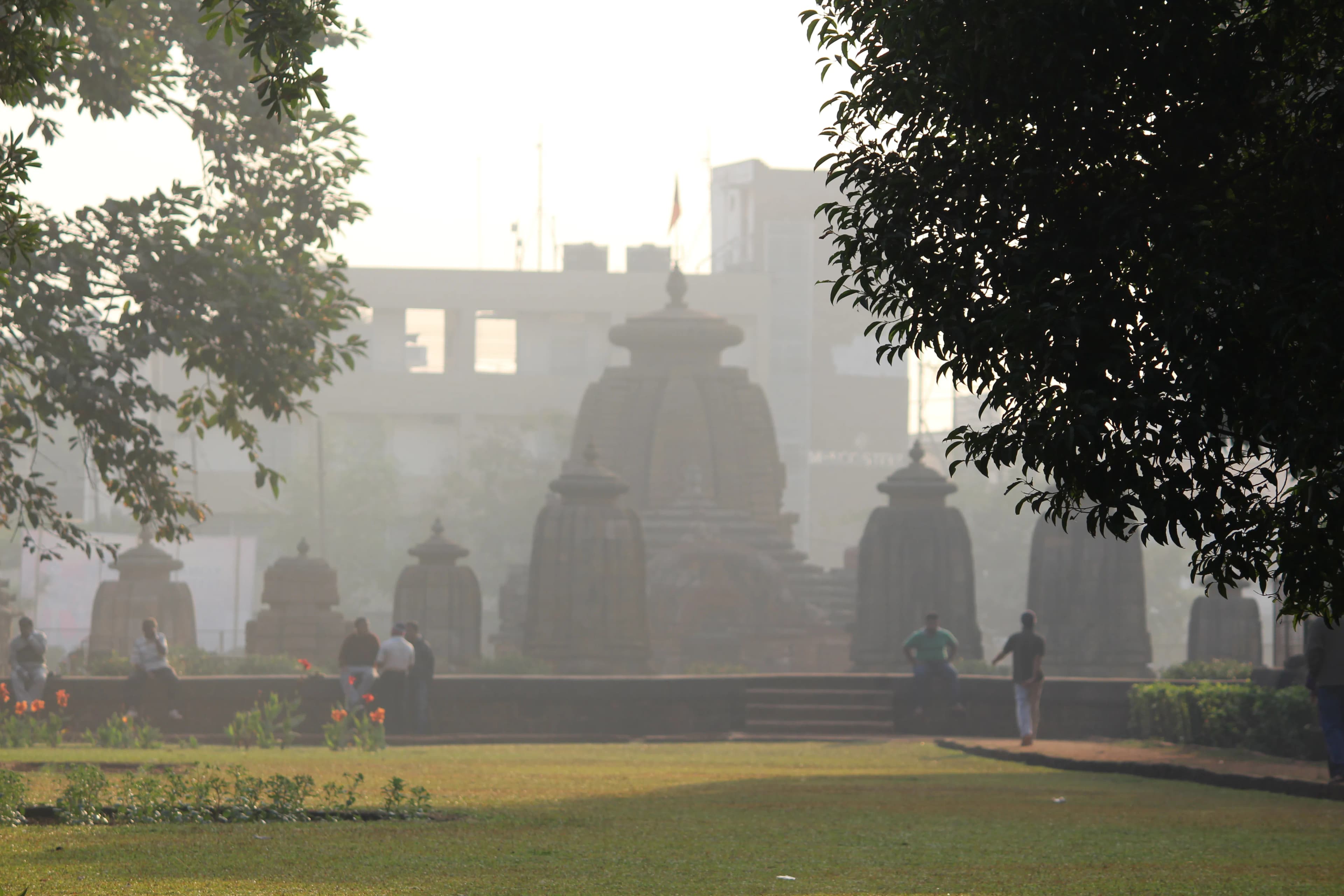
Featured
80% Documented
Kedar Gouri Vihar, Khordha, Bhubaneswar (751002), Odisha, India, Odisha
The midday sun cast long shadows across the laterite stones of the Mukteswara Temple, etching the intricate carvings into stark relief. Standing before this 10th-century marvel in Bhubaneswar, I felt a palpable shift, a whisper of the past carried on the gentle breeze. This wasn't just another temple; it felt like a pivotal moment captured in stone, a bridge between the simpler Kalinga architecture of earlier centuries and the ornate grandeur that would define the later temples of Odisha. The Mukteswara, though smaller than its successors like the Rajarani and Lingaraj, possesses a captivating elegance. Its sandstone gateway, the torana, is arguably its most celebrated feature. Covered in a tapestry of carvings – nagas, yakshas, and intricate scrollwork – it stands as a testament to the skill of the ancient artisans. I spent a considerable amount of time studying the torana, tracing the lines of the sculptures with my fingers, marveling at the dynamism captured within the static stone. The depiction of Lakulisa, a Shaivite ascetic, particularly caught my eye. His serene countenance, framed by flowing locks, seemed to radiate a quiet wisdom, a stark contrast to the writhing forms of the mythical creatures surrounding him. Passing through the torana, the compact courtyard opened before me, the main temple, or vimana, dominating the space. The vimana, built in the rekha deul style, rises gracefully towards the sky, its curvilinear form a testament to the architectural prowess of the period. Unlike the later temples, the Mukteswara’s vimana is relatively uncluttered, allowing the eye to appreciate the flowing lines and the subtle interplay of light and shadow. The decorative elements, though present, are restrained, emphasizing the overall harmony of the structure. I noticed the distinct use of chaitya arches, a recurring motif in Odishan architecture, adorning the walls. These miniature shrines, each housing a deity, added a layer of symbolic depth to the structure. The jagamohana, or assembly hall, connected to the vimana, is equally captivating. Its pyramidal roof, adorned with intricate carvings, provided a welcome respite from the midday sun. Inside, the atmosphere was noticeably cooler, the air thick with the scent of incense and the murmur of prayers. I observed the elaborate carvings on the pillars, each depicting scenes from mythology and daily life. The narrative quality of these sculptures was striking, each panel telling a story, transporting the viewer to a different time and place. One aspect that truly sets the Mukteswara apart is its experimental nature. It's often referred to as a "gem of Orissan architecture," and I understood why. The temple showcases the first extensive use of sculptures on the exterior walls, a feature that would become a hallmark of later temples. The intricate latticework on the windows, the delicate floral motifs, and the playful depictions of animals all hinted at a burgeoning artistic confidence, a willingness to push the boundaries of traditional architectural norms. As I circled the temple, absorbing the details, I couldn't help but reflect on the continuity of tradition. The Mukteswara, though centuries old, remains a living testament to the enduring power of faith and artistry. The rituals performed within its walls, the hymns chanted, the offerings made – these are echoes of practices that have been carried out for generations. It's this unbroken thread, this connection to the past, that makes the Mukteswara not just a historical monument but a vibrant part of the cultural fabric of Odisha. Leaving the temple grounds, I carried with me not just images of carved stone and intricate sculptures, but a deeper appreciation for the rich tapestry of Indian architectural history.
Temple
Eastern Ganga Period
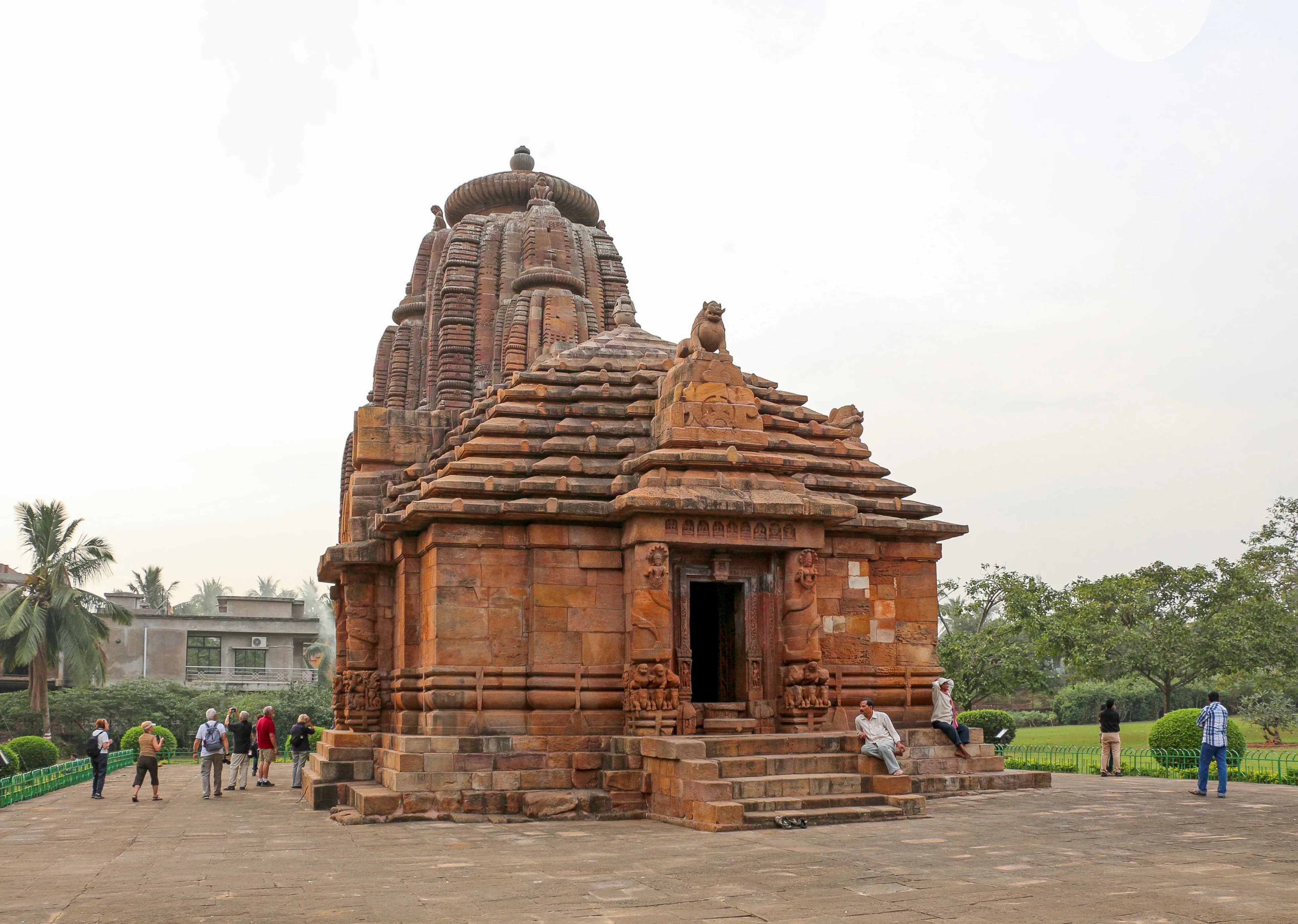
Featured
85% Documented
Tankapani Road, Khordha, Bhubaneswar (751002), Odisha, India, Odisha
The sun, a molten orb in the Bhubaneswar sky, cast long shadows across the sculpted figures adorning the Rajarani Temple. Having crisscrossed the length and breadth of North India, exploring countless temples, I thought I’d become somewhat immune to architectural marvels. But Odisha, with its unique Kalinga style, stopped me in my tracks. The Rajarani, even in its name – a moniker derived from the reddish-gold sandstone used in its construction – hinted at something special. Unlike the towering structures of Khajuraho or the intricate carvings of Konark, the Rajarani exudes a quiet elegance. The temple, raised on a platform, is surrounded by a manicured lawn, a welcome respite from the bustling city just beyond its walls. The sandstone, locally known as "rajarania," glows with a warm, almost ethereal light, particularly striking during the golden hours. It's a softer, more delicate hue than the sandstone I've encountered in Rajasthan, lending the temple a feminine grace. As I approached the deul, the main temple structure, I was immediately drawn to the intricate carvings that covered almost every inch of its surface. Unlike the narrative panels found in many North Indian temples, the Rajarani’s carvings are predominantly decorative. Sumptuous figures of nayikas (heroines) in various poses, celestial musicians, and intricate floral motifs adorn the walls. These figures, though sensual and evocative, are remarkably restrained, hinting at emotions rather than explicitly portraying them. I noticed a distinct absence of deities within the sanctum, a mystery that adds to the temple’s enigmatic charm. Local lore suggests it was once dedicated to Shiva, while others believe it was a tantric shrine. This ambiguity, rather than detracting from the experience, only deepens the sense of wonder. The temple’s architecture is a fascinating blend of styles. The curvilinear shikhara, reminiscent of the later temples of Khajuraho, rises gracefully towards the sky. However, the lower portions of the temple, with their intricate carvings and decorative bands, retain a distinct Odia flavour. I spent a considerable amount of time examining the dikpalas, the guardian deities carved on the outer walls. Their forms, though weathered by time, still retain a powerful presence, their expressions a blend of serenity and strength. One of the most striking features of the Rajarani is the presence of sculpted erotic figures, similar to those found at Konark. However, unlike the explicit depictions at the Sun Temple, the erotic carvings here are more subtle, interwoven with the decorative motifs and often difficult to discern at first glance. This integration of the sensual within the sacred speaks volumes about the holistic worldview of the time. Walking around the temple complex, I noticed several smaller shrines surrounding the main deul. These subsidiary shrines, though less ornate, echo the architectural style of the main temple. The entire complex is designed to draw the visitor’s gaze upwards, towards the soaring shikhara, creating a sense of awe and reverence. The Rajarani Temple is more than just a collection of stones and carvings; it’s a testament to the artistic and spiritual sensibilities of a bygone era. It’s a place where the boundaries between the sacred and the secular, the sensual and the spiritual, become blurred. As I left the temple grounds, the setting sun painting the sandstone a fiery orange, I felt a profound sense of peace and a renewed appreciation for the rich tapestry of Indian art and architecture. The Rajarani, though less famous than some of its counterparts, is a hidden gem, a must-see for anyone seeking to delve deeper into the heart of India's cultural heritage.
Temple
Eastern Ganga Period
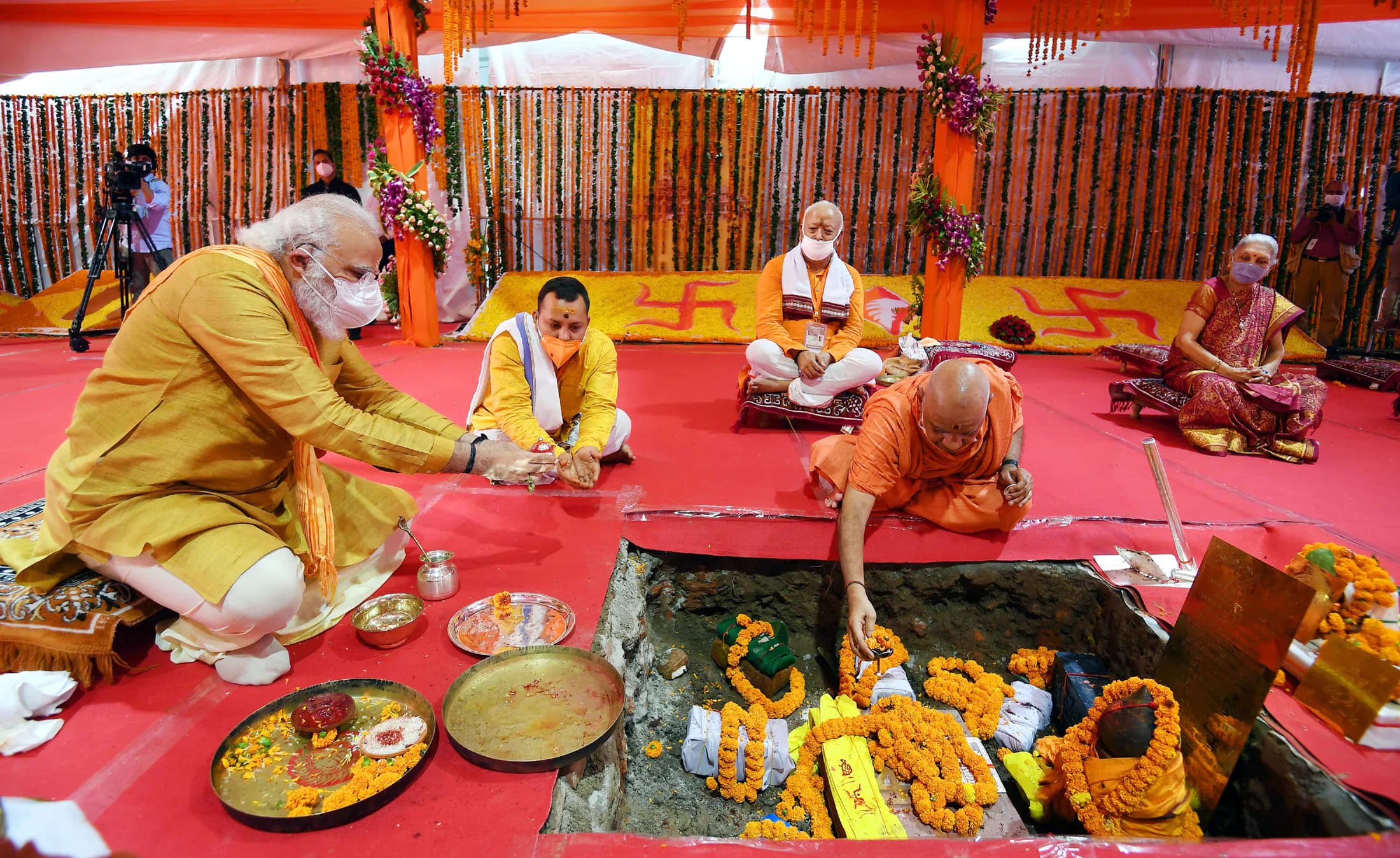
Featured
80% Documented
Ram Mandir Road, Kharvela Nagar, Bhubaneswar (751001), Odisha, India, Odisha
The midday sun cast long shadows across the laterite stones of the Ram Mandir in Bhubaneswar, illuminating the intricate carvings that adorned its surface. Having spent years documenting the architectural wonders of Gujarat, I was eager to experience the unique Kalinga style of temple architecture that Odisha is renowned for. And the Ram Mandir, though a relatively modern structure compared to some of Bhubaneswar's ancient marvels, did not disappoint. Unlike the towering shikharas of Gujarat's Solanki dynasty temples, the Ram Mandir presents a cluster of temples, each dedicated to a different deity – Ram, Lakshman, and Sita. This grouping immediately sets it apart, creating a sense of community and interconnectedness among the deities. The main temple, dedicated to Lord Ram, dominates the complex. Its curvilinear shikhara, a hallmark of the Kalinga style, rises elegantly towards the sky, its surface covered in a dense tapestry of sculpted figures. As I approached the main entrance, I was struck by the sheer profusion of carvings. Every inch of the temple walls, from the base to the pinnacle, seemed to pulsate with life. Mythological scenes, celestial beings, and intricate floral patterns intertwined, creating a visual narrative that captivated my attention. The figures, though weathered by time and the elements, retained a remarkable sense of dynamism. I noticed the distinctive elongated eyes and graceful postures of the figures, characteristic of the regional style. The detailed ornamentation, particularly around the doorways and windows, showcased the skill and artistry of the craftsmen who had painstakingly carved these stories into stone centuries ago. Inside the main sanctum, the atmosphere was hushed and reverent. The deity of Lord Ram, flanked by Sita and Lakshman, exuded a serene presence. The play of light and shadow within the sanctum added to the spiritual ambiance. While photography wasn't permitted inside, the image of the deities, bathed in the soft glow of oil lamps, remained etched in my memory. Moving to the smaller temples dedicated to Lakshman and Sita, I observed subtle variations in their architectural details. While adhering to the overall Kalinga style, each temple possessed its own unique character. The Lakshman temple, for instance, featured a slightly less ornate shikhara, while the Sita temple had a more intimate and enclosed feel. The outer walls of the complex presented a fascinating contrast to the more polished surfaces of the main temples. Here, the laterite stone was left largely unpolished, revealing its natural texture and warm hues. This created a sense of rustic charm and highlighted the intricate carvings even further. I spent a considerable amount of time studying the bas-relief panels depicting scenes from the Ramayana. The narrative unfolded across the walls, bringing the epic to life in a tangible way. I was particularly drawn to the depiction of the battle between Ram and Ravana, the dynamism of the scene captured with remarkable skill. One aspect that struck me was the integration of the temple complex with its surroundings. Unlike some of the more isolated temples I had encountered in Gujarat, the Ram Mandir felt connected to the bustling city of Bhubaneswar. Devotees flowed in and out, their prayers and rituals adding another layer to the temple's vibrant tapestry. The air was thick with the scent of incense and the sounds of chanting, creating a sensory experience that was both captivating and deeply moving. Leaving the Ram Mandir, I carried with me a profound appreciation for the Kalinga style of temple architecture. Its unique blend of grandeur and intricate detail, its seamless integration of mythology and artistry, and its connection to the living traditions of the community made it a truly unforgettable experience. It served as a powerful reminder of the enduring legacy of India's rich architectural heritage, and a testament to the skill and devotion of the craftsmen who shaped these sacred spaces.
Temple
Eastern Ganga Period
Related Collections
Discover more heritage sites with these related collections
Explore More Heritage
Dive into the research. All 10 sites with architectural surveys, historical documentation, conservation reports, bibliographies, and downloadable data. Perfect for dissertations, publications, or just satisfying deep curiosity about medieval engineering.